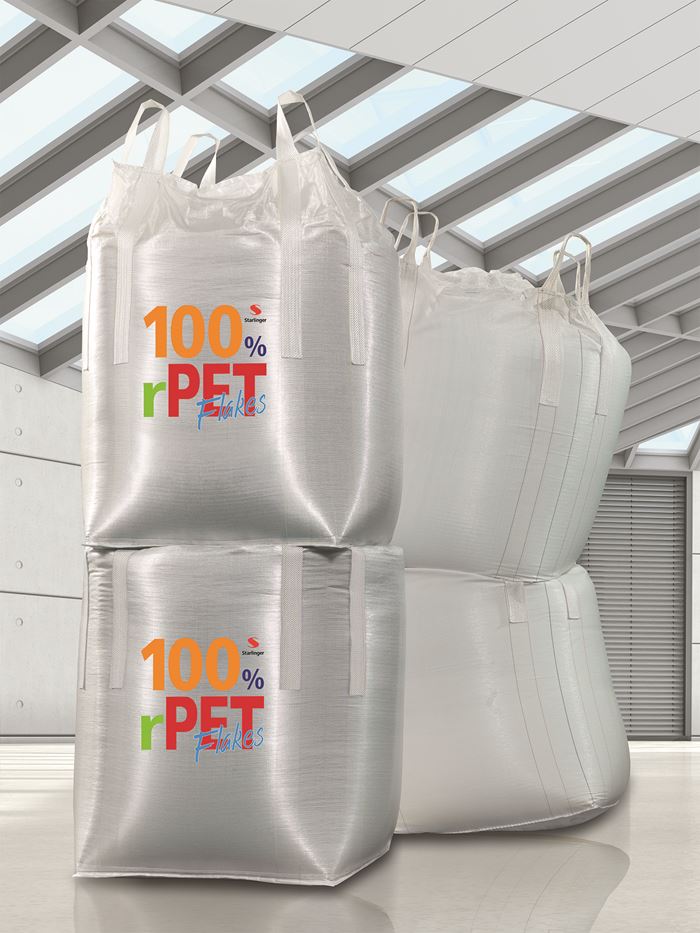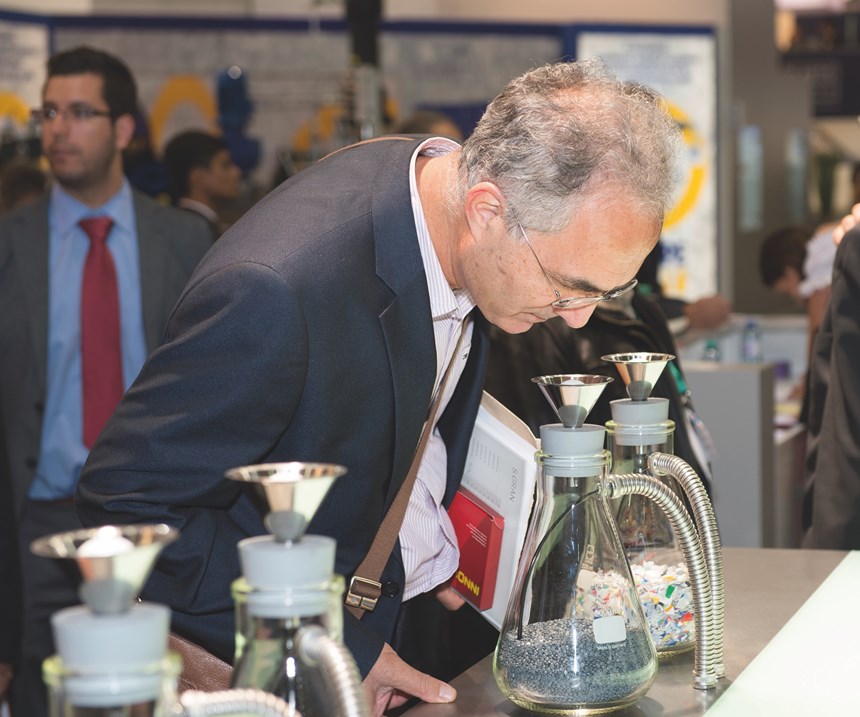Bottle-To-Bag Technology For Making Woven-Tape FIBCs From rPET
Starlinger is exhibiting an rPET FIBC at Booth W6885 along with a “smelling table” that highlights “smell-improved” regranulate.
New technology developed by Austrian-based manufacturer Starlinger & Co. GmbH (U.S. office is American Starlinger-Sahm, Fountain Inn, S.C.) can produce woven tape fabric directly from PET bottle flakes. With Starlinger’s “bottle to bag” technology, woven bags are made directly from recycled material, and these bags are in turn recyclable. Starlinger says no virgin material is needed in the production process. Current applications are big bags/FIBCs (Flexible Intermediate Bulk Containers) for storing bulk materials and rPET PP*STAR pinch bottom bags for packaging products such as dry pet food, fertilizer, sugar, flour or rice. At NPE, Starlinger is exhibiting an rPET FIBC at Booth W6885.
Starlinger is also highlighting its odor reduction technology that reportedly produces a “smell-improved” regranulate that can be used in a wide range of applications. The three-step procedure (material preparation, degassing and post-treatment) eliminates even deeply embedded odors, according to the company. The method works without additives. At NPE2018, a “smelling table” with smelling stations allows booth visitors to smell the difference between input material and smell-improved regranulate.
Related Content
-
Recycling Terminology Can Be a Minefield, So We Should Tread Lightly
Loose propagation of terms like “recyclable” and “compostable” has already brought down government regulations on labeling. The plastics and packaging industries should take that to heart with other recycle-related language. Like “monomaterial” for example.
-
Inside the Florida Recycler Taking on NPE’s 100% Scrap Reuse Goal
Hundreds of tons of demonstration products will be created this week. Commercial Plastics Recycling is striving to recycle ALL of it.
-
Building a Future With Sustainable Compounds
With roots in recycling, Star Plastics produces engineering thermoplastic compounds to meet performance and environmental goals.







